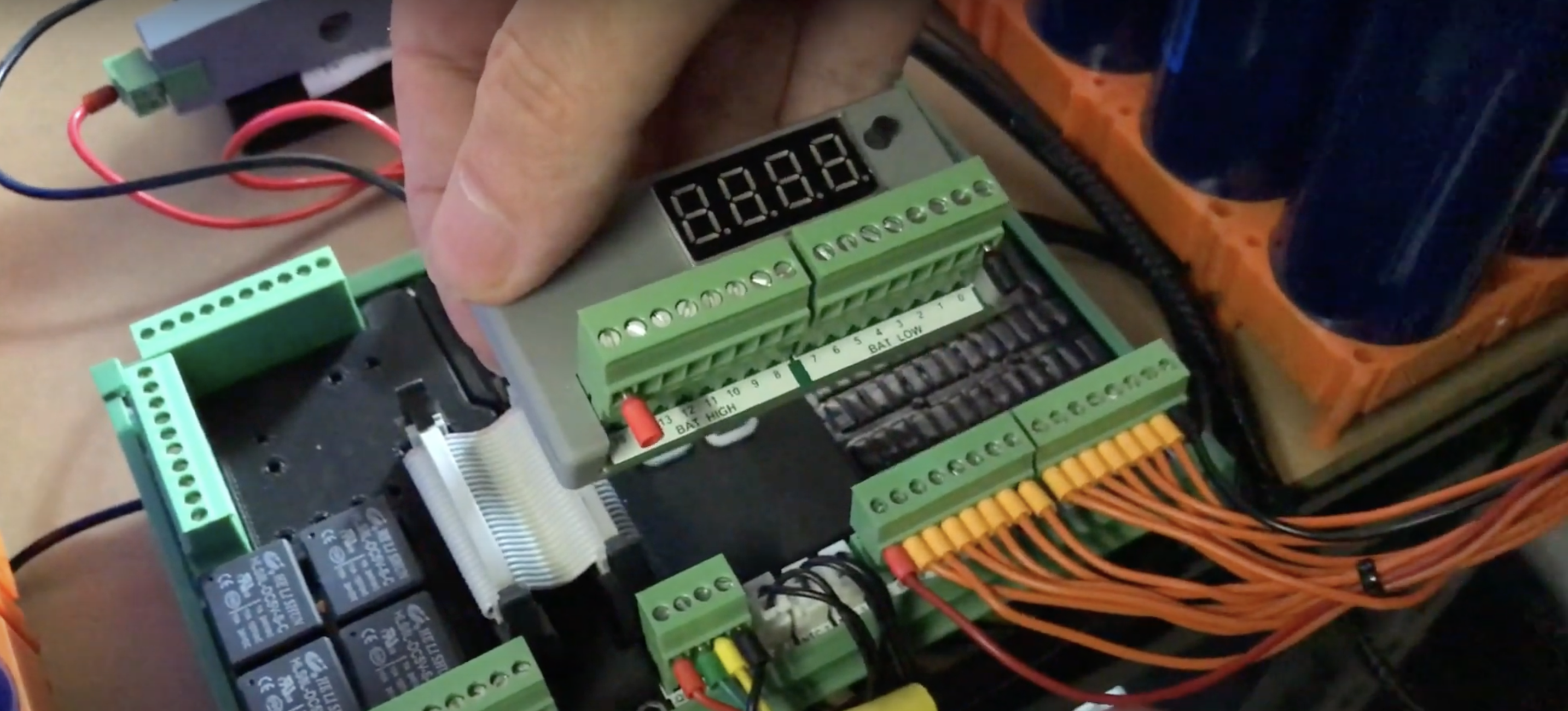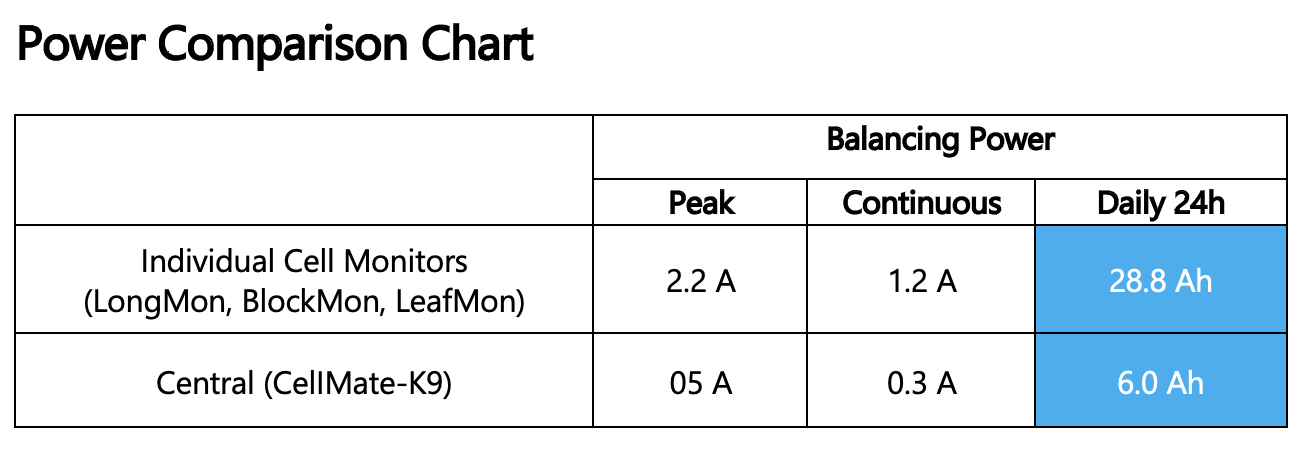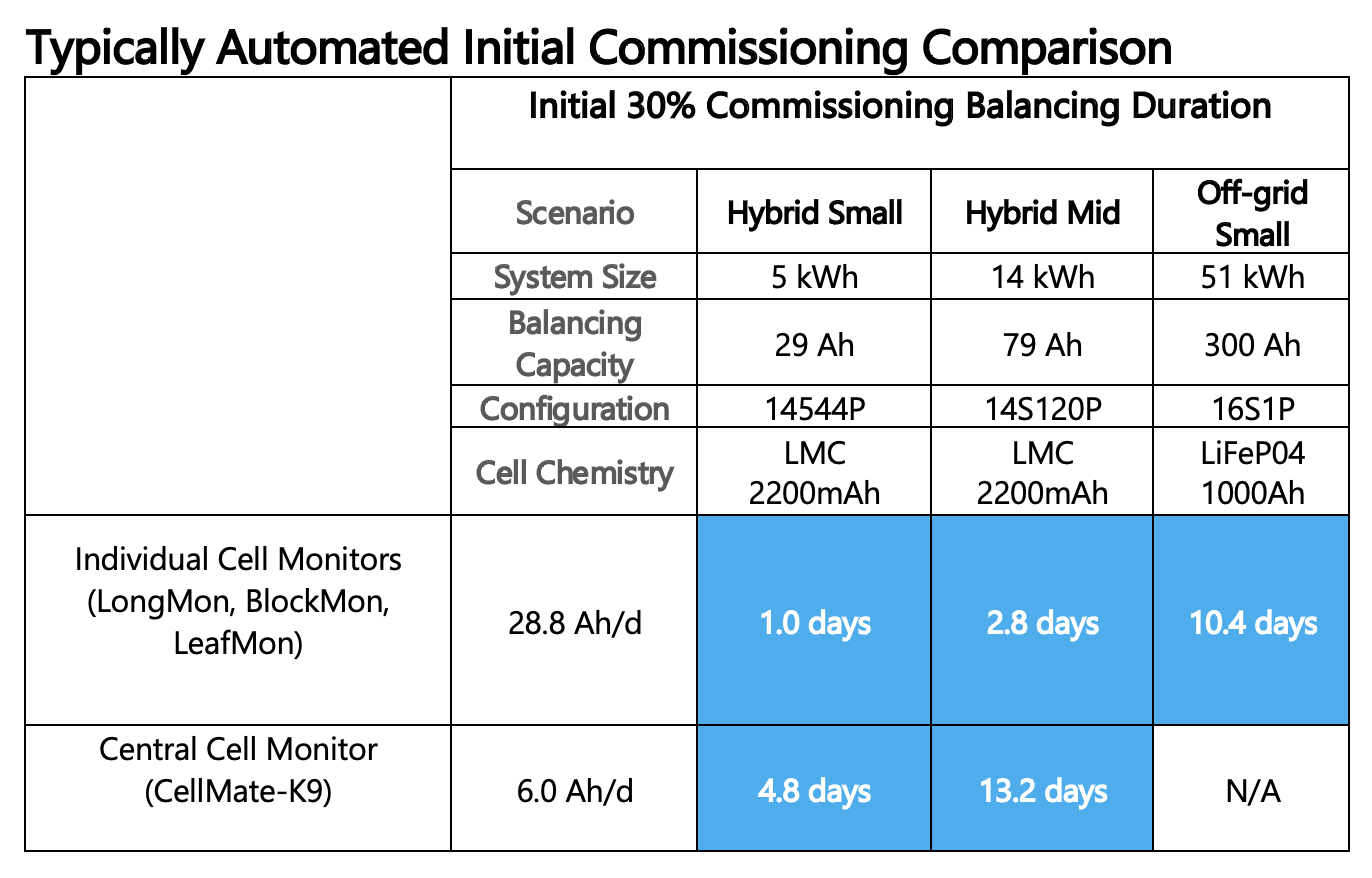¶ Cell Monitors
The cell monitoring unit measures the voltage and temperature of the cells to ensure a safe operation of the battery system.
¶ Types of Cell Monitors
¶ CellMate-K9
CellMate-K9 is our newest cell monitor — made more robust and more configurable. It is suitable for a shared wiring harness that can be used in conjunction with the WatchMonCORE supervisor.
¶ LongMon
LongMon is our original design. They are used with 18650 batteries and others in the 2-5V range that do not have an easy connection.
Note: Designed for individual monitoring and should not be used on batteries with a shared loom and located with the batteries.
¶ BlockMon
BlockMons are designed for use with prismatic or brick-like cells. The choice of which type BlockMon M8 or BlockMon M14 depends on the size of the screws. BlockMon M14 allows for up to 14 mm whilst BlockMon M8 only has an 8mm hole.
Note: Designed for individual monitoring and should not be used on batteries with a shared loom and located with the batteries.
¶ LeafMon
LeafMons are designed especially for use with Nissan Leaf cells.
Note: Designed for individual monitoring and should not be used on batteries with a shared loom and located with the batteries.
¶ MultiMon MM8
MultiMon MM8 (Mates) is the satellite cell monitoring module for WatchMonPlus (WM5). Soon moving to legacy.
¶ TopMon
TopMons are designed for specific cells and have been discontinued. There are only a few left units available to customers who have previously purchased.
Note: Designed for individual monitoring and should not be used on batteries with a shared loom and located with the batteries.
¶ Comparison of Cell Monitors
What are the main similarities and differences between the Individual (LongMons, BlockMons, & LeafMons) and the Central (CellMate-K9) Cell Monitors?
¶ Central or Individual Cell Monitor
CellMate-K9 is Centralised, which means that the cell monitoring has generally simpler wiring. This model allows between 3-16 cells to be monitored for systems from 12v, 24v or 48V systems. Multiple can be adopted in a chain with up to 20 modules with a maximum of 250 unique cells.
The LongMons, BlockMons and LeafMons are for Individual monitoring, which means that each individual cell has a separate monitoring module. The Cell Monitors are placed on the batteries and wired back to the WatchMonCORE supervisor via an IsoMon. Each distributed cell monitor measures between 2.2 V and 5 V.
¶ Cost and Ease of Use
CellMate-K9 is lower in cost (~50%) and has fewer parts, therefore it has fewer things to go wrong. The wiring is easier as it uses the shared loom, adopted by many of the prebuilt OEM batteries or you can create your own.
We always recommend that you fuse your cells close to the battery to protect this wiring. There are fuses and holders available for this purpose.
¶ Confirmation of Wiring Success
CellMate-K9 can verify that the wiring is correct before connecting your battery to the module by using a multimeter or a TestMon, making it easier to use and simpler to install.
Initially, the TestMon was needed for WM5, WM7 and MM8. However, with the CellMate-K9 as this is much more intuitive monitoring, you can just adopt a multimeter and verify the plug prior to connecting to the cell monitoring unit (CMU).

Both the central and individual cell monitors can use the Network Test to confirm that the CMU communication cabling is done correctly.
If the software of the Network test does not pass, you will need to check the wiring of each wire until you find your problem, you cannot proceed until you get a pass.
¶ What Batteries Can be Monitored by Each CellMon

- Central (CellMate-K9) is more flexible as it can deal with shared-loom batteries, such as Tesla, Nissan Leaf, Chevy and Fiat and also extends the voltage range allowing LTO batteries to be monitored. The CellMate-K9 can also be wired up to all the other batteries that decentralised BMS is capable of monitoring. (**Please note: LTO, due to the lower voltage per cell of 2.4v, has its own variant that you can ask for when ordering.)
- Individual cell monitors require a cell monitor per cell in series, LeafMon for use with Leaf cells, BlockMon for use with Prismatic cells and LongMon for others. (**Please note: Individual cell monitors are not suited to OEM shared loom batteries).
¶ Temperature
- CellMate-K9 has 4 external temperature sensors that can be placed around the battery pack to measure cell temperature.
- WatchMon4 relies on the temperature sensors on the cell monitors themselves so has one per cell monitor.
¶ Compatibility
Anything compatible with the WatchMon4 (legacy product) is compatible with the WatchMon Series product suite.
¶ Balancing Power
- Individual cell monitors are able to balance 28.8Ah per cell per day, with a maximum of ~2A, but a typical achievable power of 0.8A.
- Central (CellMate-K9) is able to balance 6Ah per cell per day, with a max of 0.9A but a typically achievable power of 0.7A due to the design with a heatsink and fan. Typically, the daily balancing requirement for a battery cell is between 100mAh and 1000mAh. This will depend on the battery cell age, chemistry and configuration.


Balancing power beyond this level is useful to have in reserve for the initial balance and any minor fault or reconfiguration event but not every day.
Please note that because decentral balancing is higher than CellMate-K9 it does NOT make it more powerful. This is NOT BASED ON POWER it is based on BALANCING.
If the initial cells are seriously out of balance and consist of a large pack, do some manual balancing to reduce the time for this first balance.
¶ Why would I choose Central Cell Monitor (CellMate-K9)?
- Suitable for OEM batteries such as Tesla, Nissan Leaf, Fiat, Chevy Volt etc
- Suitable for LTO batteries, therefore, allows for a wider voltage range
- Able to be used for most popular Lithium cells
- Can be used in multi-string parallel or higher voltages in series by using multiple
- Simpler and easier installation
- Less complicated wiring and no tiny connectors
- Able to monitor the entire pack even when a cell goes below 2V or when all cells on that module go flat
- Bypass heat can be achieved away from the battery cells to prevent them from heating up when balancing
- Better value with the same functionality as individual / distributed
- All-in-one solution with fewer things to go wrong
¶ Why would I choose Individual Cell Monitors (LongMon/BlockMon/LeafMon)?
- If configuration outside of the typical 7-16s groupings (for example 4 multi-strings of 4S1P i.e. 4M4S1P)
- Have existing cell monitors that you wish to reuse
- Ideally suited to large format prismatic cells
- If any cell goes below 2V all visibility of the pack is lost until all cells are above 2v
- Not generally recommended for new projects
¶ FAQ: Is it possible to mix and match BlockMon M8 with Cellmate-K9 in one monitoring system?
Unfortunately, you cannot mix two different cell monitor types into one system.
¶ Cell Monitoring Options
We are now using the WatchMonCORE and Expansion 3 Hardware Guide and Pin Assignment as our recommended supervisor. With this, you can combine it with your choice for cell monitoring. View cell monitoring options here.
¶ Purchase CellMon
- WatchMonCORE Kit with CellMate-K9
- WatchMonCORE Kit for Individual Cell Monitoring Options
- Cell Monitors